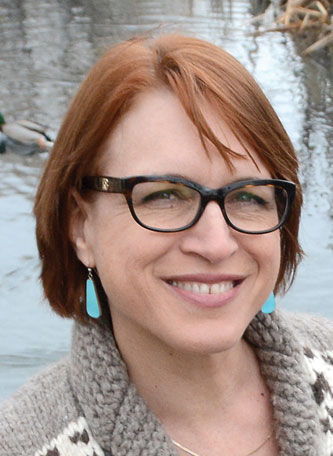Alberta-based inspectors hunting for boats infested with invasive mussels had already bagged two such vessels last month before their colleagues in B.C. were even finished training.
“Not to sound grouchy, but it’s getting a little desperate over here,” said Anna Warwick Sears, executive director of the Okanagan Basin Water Board.
Quagga and zebra mussels, each about the size of a dime, first got a foothold in the Great Lakes in the 1980s and are now established as far west in Canada as Lake Winnipeg and as far west in the United States as California.
Besides destroying native ecosystems and ruining beaches with their sharp shells, mussels also plug up in-water equipment such as dams and pipes.
Repairing the damage is costly — as much as $91 million a year in Ontario, according to the provincial government there.
With numbers like that in mind, the OBWB has been hounding senior levels of government to take action by putting inspection teams on the province’s highways and boat launches and giving border guards the authority to block contaminated boats from entering the country.
In response, the B.C. government announced in March it has committed $1.3 million over two years to train and equip three roving inspection teams, which became operational on May 29.
By contrast, the Alberta government has 10 roadside inspection stations, plus four roving teams, and as of July will also have specially trained mussel-sniffing dogs on the job.
“We’re hitting it hard in Alberta,” said Cindy Sawchuk, who leads that province’s inspection programs.
After kicking off the season in mid-May, it didn’t take long for her crews to catch their first invaders.
On May 18, a mussel-infested boat originally from Ontario was intercepted by a roving team at a boat launch on Sylvan Lake. Four days later, another contaminated boat on its way from Vancouver to the Grande Prairie area was stopped at a roadside inspection station in Hinton. It’s believed the mussels on both boats were dead, but lab results are still pending.
“This is the earliest we’ve ever been out inspecting,” said Sawchuk, adding that a total of 12 mussel-infested boats were caught during two previous seasons of inspections.
She said her teams are working with counterparts in B.C. to ensure consistent messaging about the need to clean, drain and dry boats to prevent mussels from spreading, and to make the most of limited resources by co-ordinating inspection stations on interprovincial highways to get maximum coverage.
According to estimates prepared for the Alberta government, it would cost the province $75 million annually to deal with a mussel infestation there.
A similar study done for the OBWB, which is funded primarily by local governments, pegs the cost of dealing with an invasion in this region at about $40 million per year.
And the organization has now served notice to the B.C. government that it won’t accept responsibility for dealing with the fallout — as it has with Eurasian water milfoil — if mussels get established here.
“We don’t feel like it’s right for the local governments to have to clean up the mess after the mussels get introduced — should they get introduced,” said Warwick Sears.
The board made that point clear in a position statement it adopted last month that Warwick Sears said is intended to let B.C. government officials know “they’re going to have to take responsibility if their lack of response now leads to an infestation.”
The B.C. Environment Ministry’s aquatic invasive species co-ordinator said he’s aware of the OBWB’s position statement, but said the system in place, which relies on help from neighbouring jurisdictions, is working.
Matthias Herborg said his inspectors were called to decontaminate two boats last week: one from Lake Mead in Nevada that was en route to Kelowna and another from Lake Winnipeg that was headed to Penticton.
One boat was flagged by inspectors in Nevada and the other in Alberta, and officers in those jurisdictions called counterparts in B.C. to have them check on the vessels and decontaminate them once they arrived at their destinations.
“The system works, as we saw last week,” said Herborg.
He also noted the three newly trained inspection teams, which are composed of auxiliary conservation officers and stationed in Penticton, Invermere and Nelson, are now ready to respond to calls and run roadside check stations.
“I think we’ve (made) great strides,” said Herborg, who noted this is only the first year of the inspection program.
He encouraged anyone who sees, or owns, a contaminated boat to call 1-877-952-7277 to request an inspection or decontamination.

